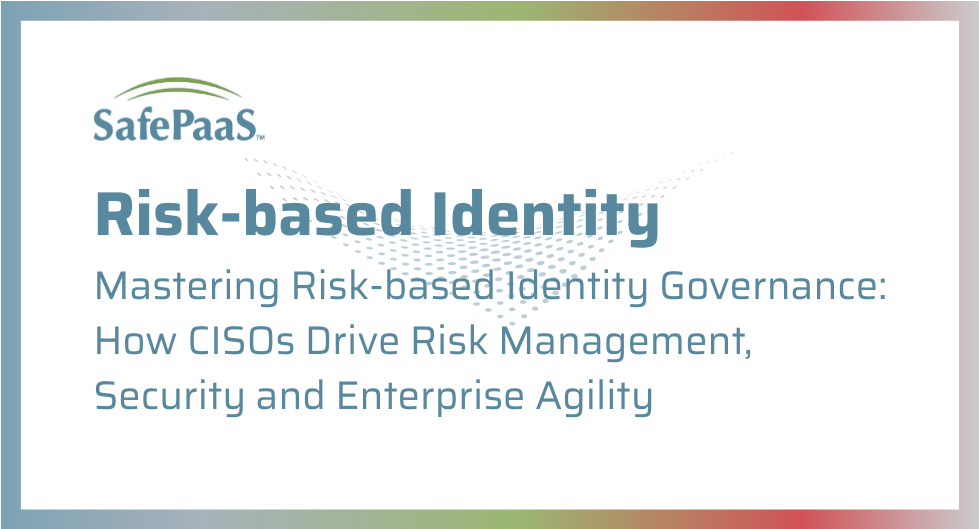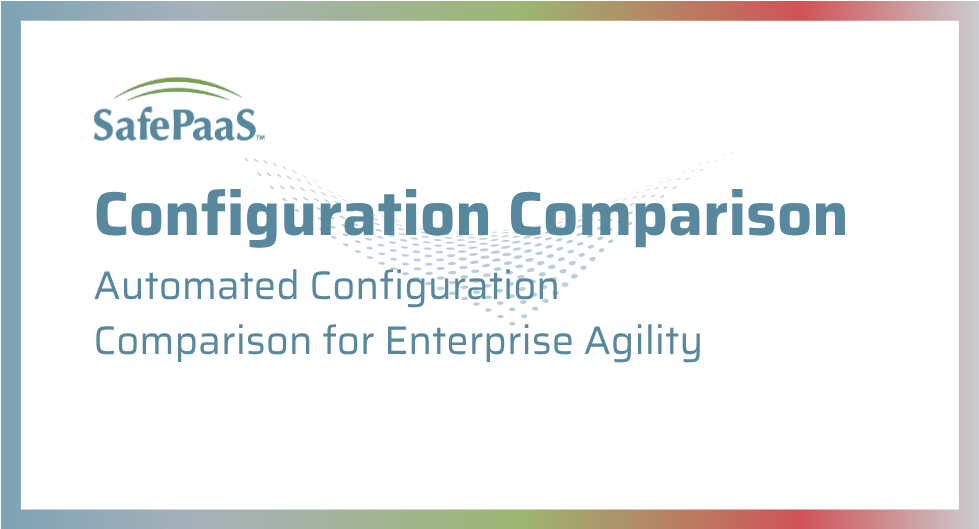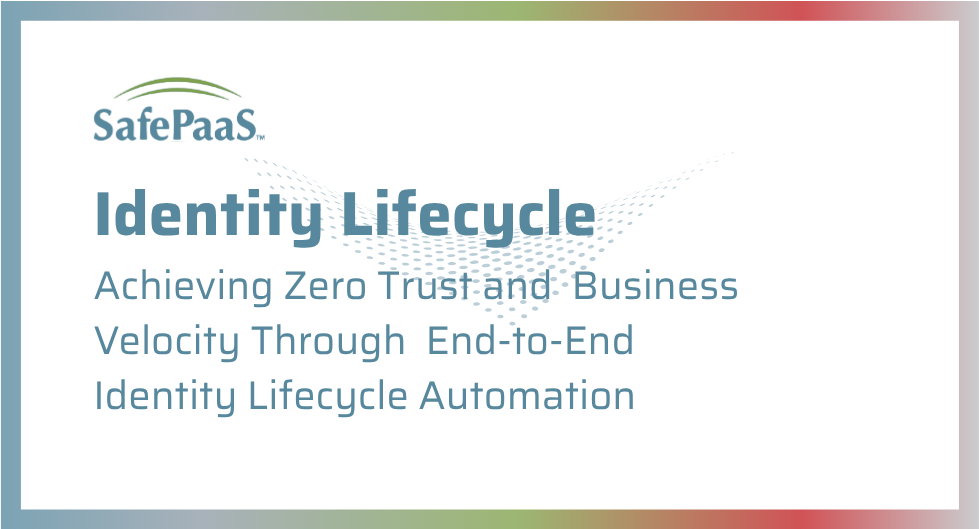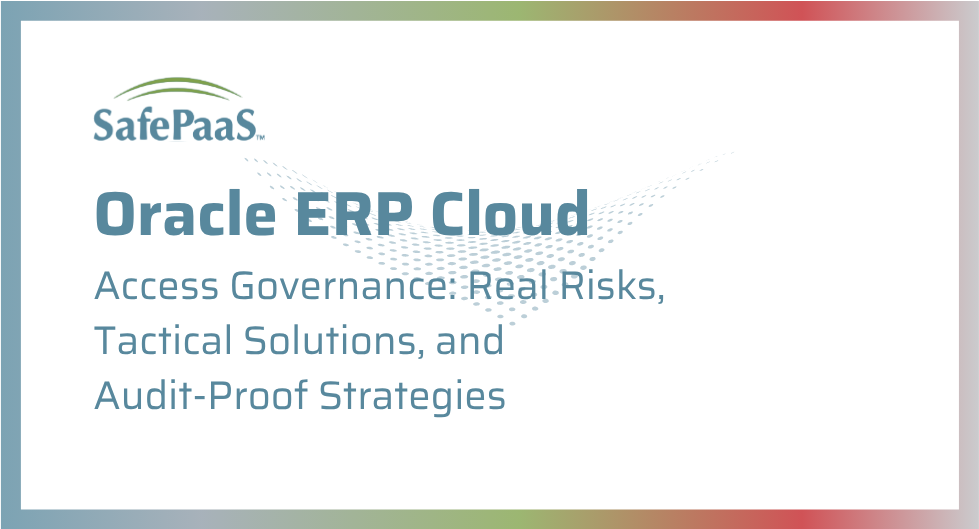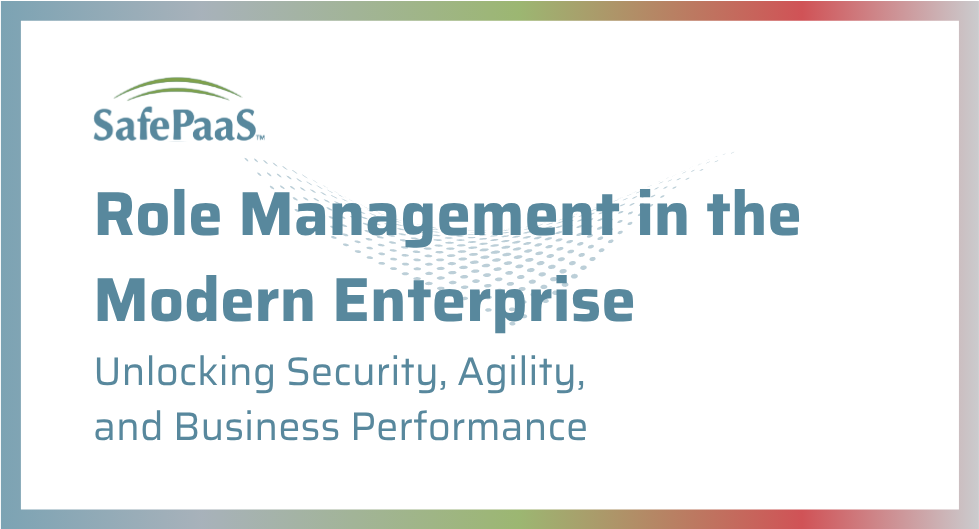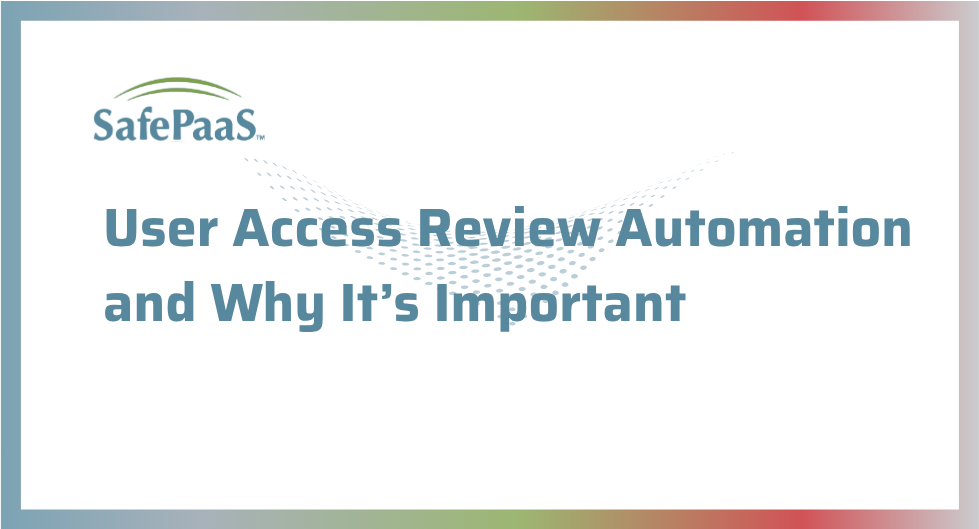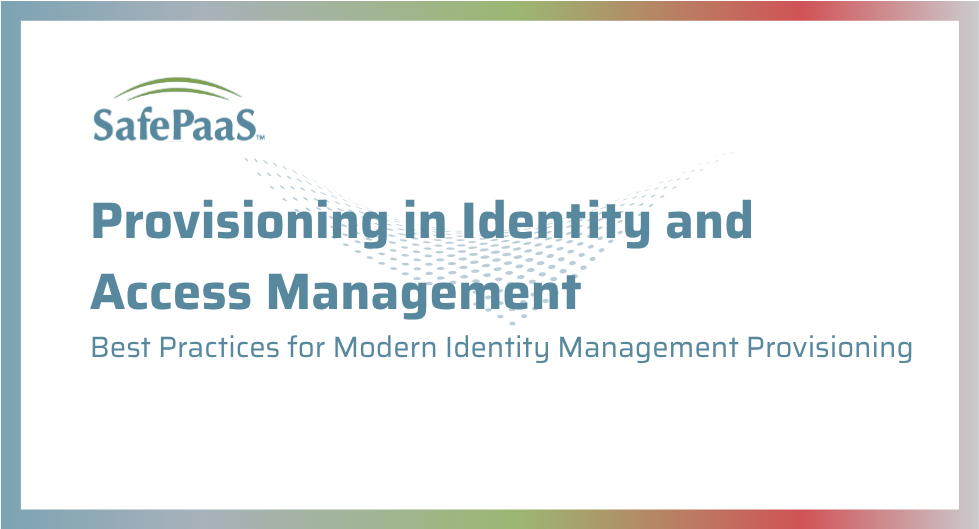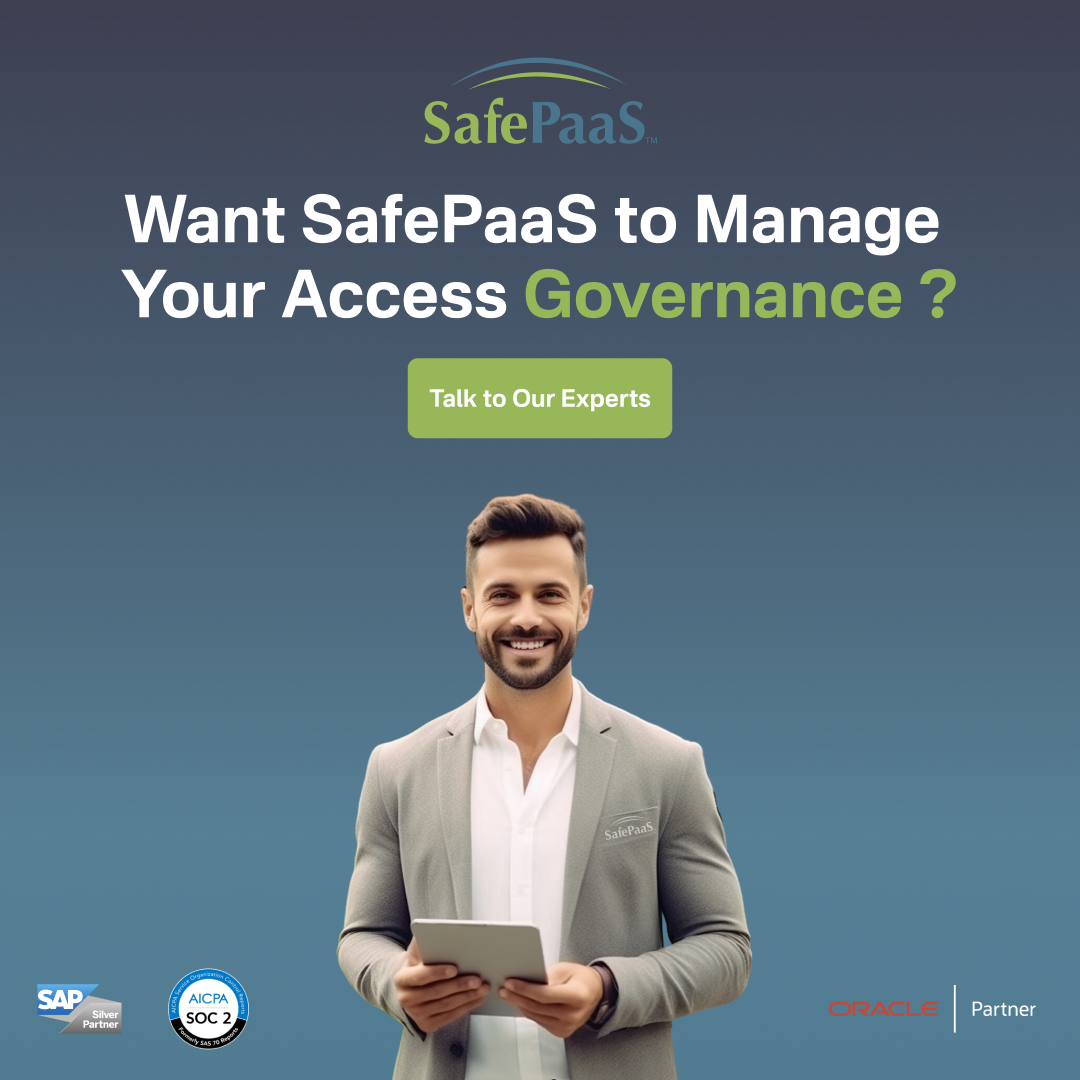Trends and Strategic Solutions for CISOs
Modern enterprise security faces threats that legacy tools were never designed to counter, including AI-powered deepfakes, automated fraud campaigns, privilege escalation, and the unchecked proliferation of machine identities. CISOs must now address risks that extend far beyond regulatory requirements, including business disruption, reputation loss, operational downtime, and adversaries whose automation outpaces manual response.
Fragmented identity governance and access management solutions create dangerous blind spots. Siloed tools and static roles are ineffective against persistent privilege drift, insider threats, and digitally orchestrated attacks. Audit failures and slow response are symptoms of underlying architectural weaknesses, not just compliance gaps.
As the stakes rise, security leaders must unify controls across complex hybrid environments, detect risks in real-time, and adapt at the speed of business change. Static checklists and legacy reviews are powerless against deepfake-enabled social engineering and credential-based exfiltration.
Risk-based Identity governance is now essential for business protection, agility, and resilient oversight. The following frameworks and insights enable CISOs to leverage modern IGA, shifting from simply minimizing unauthorized access to actively solving enterprise threats, achieving measurable security outcomes, and driving lasting business advantage. Discover what to demand from solutions, avoid common pitfalls, and see how SafePaaS enables security teams to defend against today’s and tomorrow’s risks.

What Every CISO Must Know: Guiding Principles for Modern IGA?
It has been over a decade since Gartner officially recognized identity governance and administration (IGA) as a core component of the identity and access management (IAM) market. However, the context has accelerated: platforms must respond to rapidly evolving threats, increasing business complexity, and growing regulatory pressure. CISOs need solutions that directly address critical pain points—protecting sensitive data, enabling audit readiness, and managing digital identities in cloud and hybrid environments. Mission-critical identity governance now ties directly to business continuity, resilience, and innovation. Requirements demand rapid scalability, robust integration, and tangible business value. This guide distills the modern landscape for CISOs seeking not just technology, but business-driven outcomes aligned with today’s risks.
Modern Threats and the IGA Response
Identity governance anchors enterprise risk management and digital identity protection. Yet today’s reality—marked by SaaS pervasiveness, deep fake threats, and digitized processes—creates new vulnerabilities and pain points:
- Targeted cyberattacks exploiting privilege drift and dormant admin accounts remain undetected without adaptive controls.
- Sophisticated insider threats leveraging over-privileged identities cannot be resolved by legacy, static models.
- Intensified regulatory scrutiny for data access, visibility, and privacy exceeds the capability of manual audit trails.
- Explosion in machine identities complicates privilege control and exposes blind spots.
More than 60% of breaches now result from compromised credentials via phishing, brute force, or privilege abuse. The Identity Defined Security Alliance reports that 94% of organizations have suffered a breach in the last two years.
Legacy platforms struggle to keep up, resulting in siloed tools, convoluted architectures, and significant blind spots. Complexity itself becomes a vulnerability, producing costly audit failures and incidents. Static role models (like RBAC) and uncoordinated reviews result in lingering, unmanaged risks and organizational drag. Where onboarding, access reviews, and privilege re-certification aren’t automated and unified, risk snowballs, and the business becomes exposed to emerging threats, such as those driven by deepfakes and evolving fraud techniques.
The Solution: Moving Beyond Capabilities to Business Outcomes
Your mission is clear. Move beyond static role controls to unified adaptive security. Modern solutions must provide:
- Continuous controls that address privilege drift and insider risk.
- Real-time risk insights and identity analytics that empower CISOs to respond rapidly to threats (including AI-enabled attacks and manipulated identities).
- Ability to adapt rapidly to cloud, hybrid, and multi-cloud environments, ensuring business agility and audit integrity.
Platforms that address these pain points enable organizations to optimize business processes, drive innovation, and demonstrate resilience in the face of rising complexity.
Non-Negotiable IGA Outcomes for Security-Driven Organizations
In a landscape where attack surfaces evolve constantly and stakeholder expectations rise, CISOs must demand Policy-Based IGA platforms that deliver solutions to real business problems—not just technical features.
Dynamic, Granular Access Management (PBAC)
Pain point: Static roles don’t adapt as business needs and threats change.
Solution: Fine-grained Policy-Based Access Controls (PBAC) provide dynamic, contextual policy decisions that adapt to business events, regulatory shifts, and new threats (including deep fakes).
Granular Privilege Administration
Pain point: Over-privileged accounts expose organizations to insider threats and fraud.
Solution: Precise, adaptive permissions shift as user needs and security contexts evolve, supporting zero-trust security at scale.
Real-Time Threat Detection, Prevention, and Remediation
Pain point: Incidents go undetected and unresolved until after damage has occurred.
Solution: Continuous monitoring of privileged activity, with anomaly detection for proactive intervention. Automated SoD (separation of duties) violation detection blocks and remediates policy breaches before they escalate.
Unified Platform for Audit, Risk, and Security Governance
Pain point: Disparate audit trails and evidence create inefficiencies and compliance gaps.
Solution: Centralized audit, risk, and governance; unified evidence collection and real-time incident response from a single source of truth.
Real-Time Risk Insights
Pain point: Access decisions disconnected from security posture allow risk to go unnoticed.
Solution: Entitlement and KRI (key risk indicator) data directly connected to real-time security dashboards.
Scalable & Adaptable to Hybrid Environments
Pain point: Legacy and some modern infrastructures require manual, inefficient processes.
Solution: Effortless management of identities, devices, and applications across all environments—supported by elastic resource allocation that scales with real-time business demand.
Business Process Optimization
Pain point: Manual access reviews introduce bottlenecks and compliance risk.
Solution: Automated workflows and fine-grained evidence generation replace repetitive manual tasks.
Deep Application-Specific Governance
Pain point: Generic overlays lack the depth needed for ERP and mission-critical apps.
Solution: Tailored controls deeply integrated with core business applications prevent fraud and stop control drift in its tracks.
Advanced Identity Analytics and Continuous Monitoring
Pain point: Security teams react too late to new risks.
Solution: Actionable alerts, predictive detection, and system-wide visibility elevate security posture from reactive to proactive.
Selecting an IGA platform that addresses these challenges is the fastest way to enable secure business growth—without compromising auditability, operational efficiency, or future readiness.
How SafePaaS Delivers on These Critical Requirements
Building on these non-negotiable requirements, true IGA transformation happens only when these needs are operationalized within everyday security processes. While many platforms list features, SafePaaS bridges the gap between isolated capabilities and an actual, outcome-driven solution—fully integrating detection, prevention, remediation, and monitoring into a single, seamless platform.
SafePaaS applies these principles by centralizing all aspects of risk management, access control, and governance. This allows CISOs to realize the full value of every non-negotiable described above, with solution-based workflows and automated controls that address the full lifecycle of identity and access risk—not just siloed pain points. What follows is a practical, real-world example of how SafePaaS puts “solution thinking” into practice for Centralized IGA.
Centralized IGA: SafePaaS Solution Approach
Traditional approaches to Identity Governance and Administration (IGA) often treat pain points, such as over-privileged accounts, slow access management, inefficient manual reviews, and Segregation of Duties (SoD) risk, as isolated technical problems. This fragmented mindset in legacy platforms leads to reactive “checkbox” compliance, operational bottlenecks, missed threats, and mounting business costs.
SafePaaS’s Centralized IGA Solution goes beyond point features to address the entire spectrum of CISO identity governance challenges, including but not limited to:
- Privilege Creep and Over-Entitlement: Prevent privilege drift across both human and machine identities with dynamic, context-aware controls that adapt instantly to changing roles, business needs, threats, or reorganizations.
- Onboarding and Deprovisioning Delays: Automate lifecycle management to speed provisioning, reduce onboarding friction, and close security gaps caused by lingering dormant accounts.
- Fragmented Audit & Compliance Evidence: Unify audit trails, access reviews, certifications, approvals, and exceptions into a single source of truth, streamlining compliance while enabling quick incident response.
- Manual, Inefficient Access Reviews: Replace clunky spreadsheets with automated reviews, workflow-driven remediations, and evidence generation, eliminating repetitive manual work and review backlogs.
- Emerging Cyber Threats: Leverage real-time behavioral analytics to detect and remediate credential abuse, insider risk, anomalous activity, and threats from privilege escalation or compromised credentials.
- SoD & Sensitive Access Management: Proactively identify and block potential SoD violations at the point of access request—not just through post-facto monitoring—while also supporting business exceptions with automated mitigation and oversight.
- Application-Specific Governance: Deliver deep integration and tailored controls for ERP, finance, HRIS, and other business-critical applications, ensuring that unique risks in each environment are continuously addressed and evidenced.
SafePaaS Solution: Full-Lifecycle, Business-Centric IGA
Modern identity governance is not just about identifying risks—it’s about continuously eliminating them at every stage of the access lifecycle. Too often, organizations are left managing isolated problems with disconnected tools: privilege excess, policy violations, manual reviews, and incomplete audit evidence. SafePaaS solves these challenges for good by orchestrating every step—detection, prevention, remediation, monitoring, and ongoing improvement—within a single, unified solution.
This closed-loop lifecycle approach enables CISOs and security teams to move from reactive firefighting to proactive, measurable outcomes. Each function is connected so that risks are not only surfaced but immediately resolved, documented, and prevented from recurring—no matter how identity, business, or threat landscapes evolve.
SafePaaS unifies the essential functions of a modern IGA strategy into a single, outcome-focused process:
Proactive Detection & Prevention
- Dynamic policy enforcement blocks both privilege excess and access risks—before violations or breaches can occur.
- Simulations and “what-if” analysis let teams test future business or IT changes for governance impact in advance.
Automated Remediation & Streamlined Workflows
- Guided workflows accelerate the removal of excess access, close dormant accounts, redesign roles, and quickly document remediation for audit readiness.
- Task automation reduces cycle times and operational load.
Continuous Monitoring, Analytics & Assurance
- System-wide analytics identify emerging risks and insider threats in real time.
- Key Risk Indicator (KRI) dashboards, automated evidence collection, and exception tracking provide ongoing visibility and peace of mind for both CISOs and auditors.
Centralized Evidence, Reporting & Continuous Improvement
- All audit trails, reviews, approvals, and process analytics are captured and accessible from a single platform.
- Integrated analytics surface bottlenecks, enabling
This closed-loop, business-centric process ensures identity governance challenges are resolved, not just documented—advancing security posture, operational efficiency, and regulatory readiness for the long term.
Business Outcomes Delivered
By starting from real business pain points and unifying every lifecycle stage, SafePaaS helps CISOs and security teams:
- Reduce audit findings, policy violations, and associated costs.
- Accelerate onboarding, deprovisioning, and access certification cycles.
- Prevent privilege misuse, insider threats, and regulatory lapses before they occur.
- Elevate agility, resilience, and secure digital growth.
Buyer’s Guide: CISO Evaluation Checklist
When evaluating IGA solutions, demand business outcomes—not just technical checkboxes. This checklist ensures your chosen solution solves the real problems:
|
Key Capability |
Evaluation Questions for Security Teams |
|
Policy-Based Access Controls |
Are access decisions context-sensitive, dynamic, and business-aligned? |
|
Real-Time Threat Detection |
Does the platform flag risky privilege uses and SoD violations immediately? |
|
Unified Security Governance |
Can all reviews and evidence be visualized and acted upon in real time? |
|
Hybrid and Cloud Scalability |
Will the system scale across all environments with consistent coverage? |
|
Automated Reviews & Evidence |
Are reviews, approvals, and remediation tasks fully automated? |
|
Application-Specific Controls |
Can tailored controls be enforced for every core business application? |
|
Advanced Analytics & Monitoring |
Are risks and KRI data visible to both Security Operations and Executives? |
How to use: Ask vendors to demonstrate each solution live, showing real workflows and business impact, not just static checklists. Prioritize depth, integration, and ease of evidence for board-level reporting and incidents. Map findings to specific business scenarios to validate fit.
Outcomes and Customer Success: Proof of Solutions
- Manufacturing Audit Transformation: A global manufacturing leader eliminated manual audit pain points. SafePaaS shifted the company to continuous review cycles—streamlining certification processes by over 70% and freeing resources for strategic risk reduction.
- Public Sector Fraud Prevention: A treasury agency solved duplicate payment and fraud vulnerabilities, using deep transaction monitoring to halt losses in real time, saving $30 million and boosting stakeholder trust.
- Retail Enterprise Agility: Retail teams overcame onboarding and seasonal surges—SafePaaS automated audit evidence, reduced review time by 60%, and enabled secure business growth.
Next Steps: Building Security-First Identity Governance
Security leadership today means driving business continuity and transformation with forward-looking governance. The pain points of legacy controls, audit bottlenecks, and emerging threats cannot be ignored.
- Assess your current processes for critical gaps and exposures—especially those vulnerable to AI-related risks and privilege drift.
- Automate, unify, and contextualize security through advanced, solution-driven IGA.
- Select partners who demonstrate measurable business impact, audit resilience, and effective threat reduction in real-world scenarios.
Contact SafePaaS for a custom assessment, demo, or to connect with us to see how we can transform your identity programs for lasting impact.
